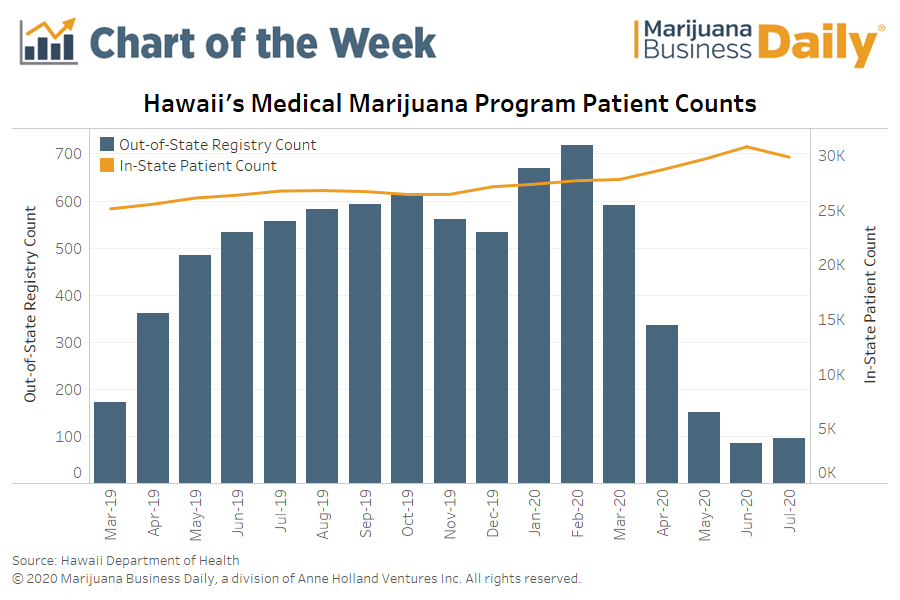The Montana cannabis market has undergone dramatic changes since voters approved medical marijuana more than 15 years ago – including near extinction followed by a voter-approved initiative in 2016 and other steps that have allowed the industry to thrive.
But the industry might be in for even more turbulence after November should a ballot measure to legalize adult-use cannabis pass.
That would usher in an entirely new business landscape, leaving operators apprehensive about more possible upheaval.
Montana lawmakers, for starters, have a history of attempting to roll back marijuana legalization.
And several industry insiders suggested the Legislature could again try to regulate marijuana operators out of business – or at least severely restrict any new adult-use market.
“It’s actually been a crazy ride, that’s for sure,” said Misty Carey, the owner of Kanna Care, which has three dispensaries.
“We’ve kind of got our act together about medical, and all of a sudden, rec is going to come down upon us.”
“It’s like hitting the reset button,” she added. “It’s going to require some restructuring … and people don’t know how it’s going to work.”
Market stability, of a sort
Montana’s medical marijuana industry has been a roller coaster nearly since its inception, having first flourished after statewide MMJ legalization in 2004.
It then endured a widespread crackdown by state Republican lawmakers that shrunk the industry to a few store operators before a 2016 ballot measure officially legalized dispensaries.
Since then, the resurgence of the industry has been something of a boom, with registered patient numbers shooting up from under 8,000 in October 2016 to 38,385 as of July 2020.
Sales in 2019 reached between $66 million and $80 million, and there’s more growth forecast for the state, according to Marijuana Business Daily estimates.
By 2024, even without recreational legalization factored in, sales in Montana might nearly double to as much as $155 million.
The number of dispensaries also has ballooned.
In early 2017, roughly 50 dispensaries operated in the state, whereas now there are 363.
Those are run by 240 licensed medical marijuana providers, and another 271 provider permits are approved and pending, according to the state Department of Health and Human Services.
“The game changed a lot after 2016,” said Kate Cholewa, a spokeswoman for the Montana Cannabis Industry Association.
‘Untethering’
One of the latest developments has been the “untethering” of medical marijuana patients.
Before June 2, each of the state’s registered MMJ patients had to choose one vertically integrated provider from which to purchase cannabis.
But a new state law approved just last year changed that, and now Montana’s medical marijuana patients can shop wherever they choose.
That’s resulted in a big sales uptick for some and a drop for others, dispensary owners said.
“Untethering has been good to us. We’ve seen a significant sales increase,” said Bobby Long, the owner of Flower, a small dispensary chain based in Missoula.
Long estimated his sales have jumped about 25% since untethering began in June.
But he also shuttered a third storefront and now focuses on two locations. That seems to be the sweet spot currently for Flower, Long said.
Rich Abromeit, who runs Montana Advanced Caregivers in Billings and has three storefronts, said he also saw a sales uptick. But it didn’t last very long and now has plateaued.
He said operators that have focused on producing a variety of products have likely done better than their counterparts who sell only medical marijuana basics now that vertical integration is the mandate for all MMJ companies.
That means any dispensary that wants to carry vape cartridges or extracts, for instance, must produce those.
“Those folks, I think, have done pretty well. Some folks that don’t have as much, they’ve seen probably a little bit of a drop” in sales, Abromeit said, adding that consumers “have a lot more choice now.”
More rec pros, cons
Abromeit, along with Long, Carey and Cholewa, expressed concern about the upcoming adult-use legalization vote, in part because of the history of Montana state lawmakers trying to regulate the industry out of existence by banning dispensaries in 2011.
That led to a yearslong court fight that ultimately threatened to shutter every dispensary in the state. That, in turn, gave rise to the 2016 ballot measure, which formally legalized MMJ dispensaries.
Then came a new round of rulemaking to oversee the industry, which had originally operated without state guidance, much as the MMJ industries in Michigan and California long ran themselves.
The knowledge of that history – and of the possibility there could be a Republican-controlled Legislature and governor after November – has stakeholders wondering how recreational legalization would play out.
On the optimistic side, Abromeit said, “once that ballot measure is enacted, it’ll change the whole landscape here in Montana.
“It’ll allow rec sales from anyone that comes into the state, and of course, that can double, triple, quadruple sales for the cannabis companies here in Montana.”
But he acknowledged he’s “excited and apprehensive at the same time” given how state lawmakers could regulate the industry.
Long agreed, noting that Montana is the only state where lawmakers actively tried to repeal MMJ legalization.
“There’s going to be some pushback in Helena if this thing passes,” Long warned.
“It’s not difficult for someone to come up with a bill that dismantles the nuts and bolts of this, and … then the whole thing crumbles beneath our feet.”
John Schroyer can be reached at johns@mjbizdaily.com





